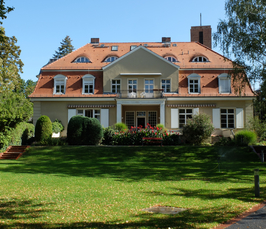Design of Novel Hybrid and Solid State Battery Materials
- TH Department Online Seminar
- Date: Aug 18, 2022
- Time: 02:00 PM (Local Time Germany)
- Speaker: Prof. Jennifer L.M. Rupp
- Technical University of Munich & TUM International Energy, Germany
- Location: https://zoom.us/j/99651052697?pwd=bGlmN3MzR1k0VUkwQVl0cVRLRXNmQT09
- Room: Meeting ID: 996 5105 2697 | Passcode: 728980
- Host: TH Department

Through this presentation we review the field from a new angle, not only focused on the classics such as Li-ionic transport and electrochemical stability window for Li-solid state battery electrolytes, but focusing on opportunities and challenges routes in thermal and ceramic processing of the components and their assemblies with electrodes. Oxide vs. Sulfide based solid state battery materials and designs will be reflected on. Also, we will carefully review and give perspectives on the role of solid state battery ceramic strategies for the electrolyte on the electrode interfaces and towards charge transfer and vs. current densities. In other words, it will be a little ceramicist (own) love story on the good and the evil we can design by smart ceramic manufacture at the interfaces originating by the very first choices made in the electrolyte ceramic structure and material design. We will disclose a new invented “sequential deposition synthesis” to offer a low budget alternative with high stoicioemtric control for battery solid electrolyte manufacture that extends prior ceramic classic synthesis routes and show first cell data from a joint collab with Samsung.
In the second part we will study a new class of ‘high entropy” Li amorphous conductors based on Li-garnets that have so far the highest known number of local bonding units and discuss these structure types towards other ‘low entropy’ glassy Li-conductor phases. Through a multidimenational spectroscopy, NMR and XAS approach the structure, polyhedral connectivity and insides on network former and modifiers have been first time resolved and are discussed. Based on the work first dopant strategies can be proposed for the network modifier opening up a new class of Li-condcutors that has a wide access range to stabilsie the various high entropy phases and process these at relatively low temperatures for future electrolyte or protective coatings for hybrid and solid state batetries operating with lithium for high energy density.
Collectively, the insights on solid state energy
storage provide evidence for the functionalities that those Li-solid state
material designs can have in new materials and synthesis for cost and mass
manufacturable solid state and hybrid battery prototypes.